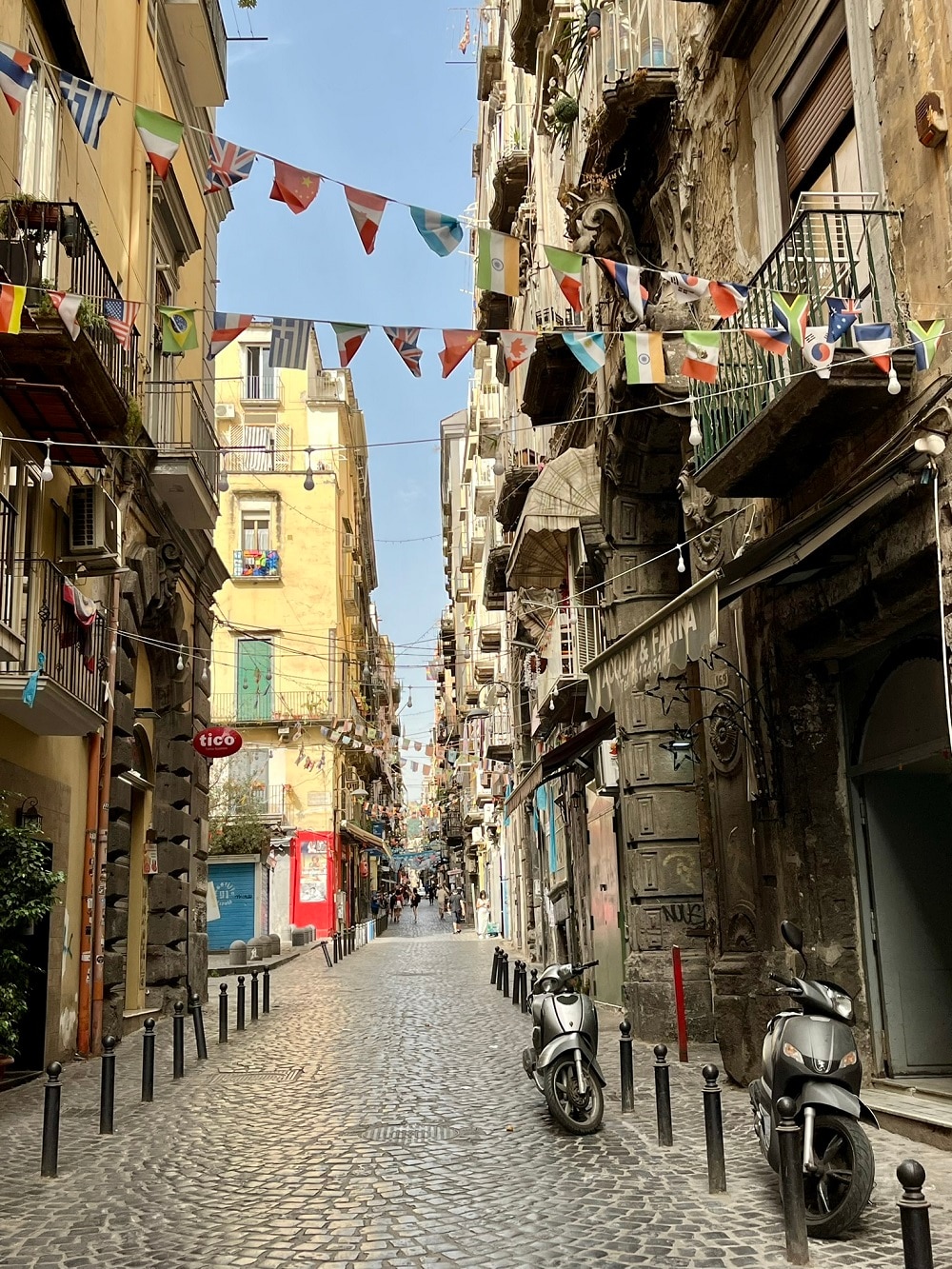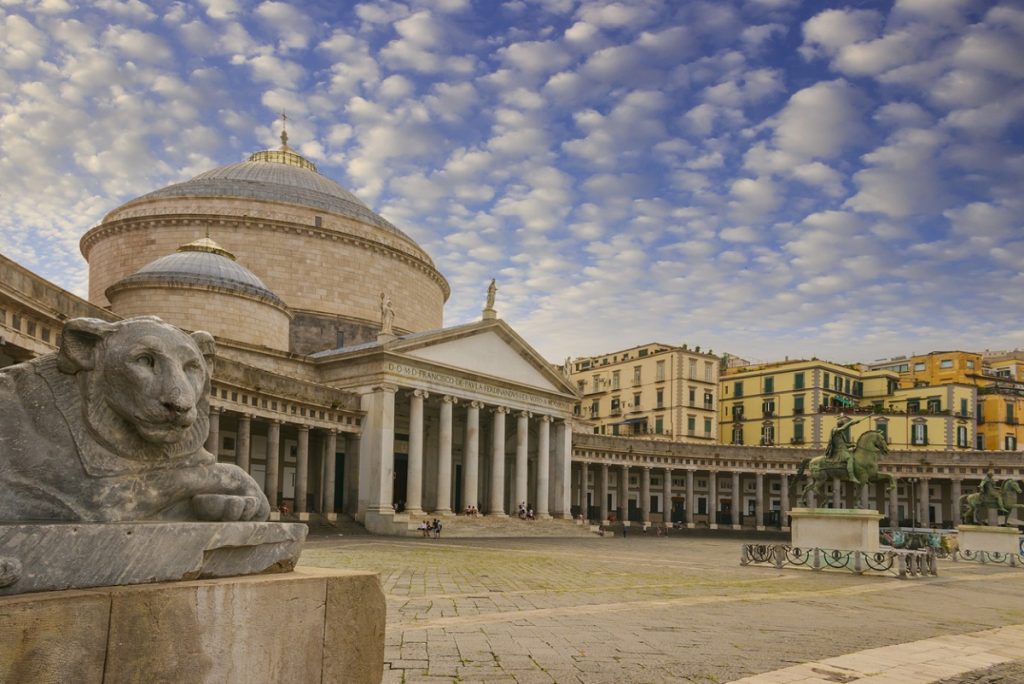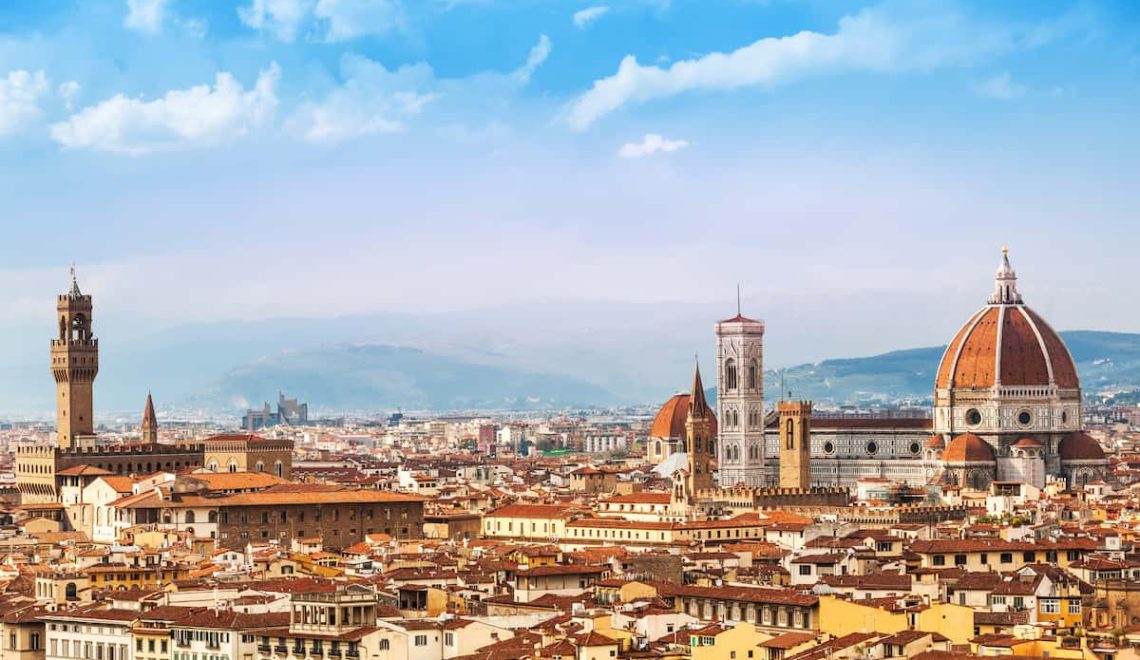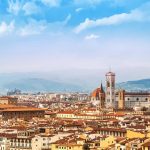
Naples isn’t a city you simply visit — it’s one you experience. Bursting with energy, charm, and contradictions, this southern Italian metropolis enchants visitors with its mix of ancient history, vibrant street life, and unforgettable flavors. Every narrow alley tells a story, every church hides centuries of art, and every bite of pizza feels like a celebration of tradition. In this guide, you’ll discover the 10 best things to see in Naples — from iconic landmarks to hidden gems — for a truly unforgettable stay in Italy’s most soulful city.
- 1 Why You Should Visit Naples at Least Once in Your Life
-
2
Top 10 Things to See in Naples
- 2.1 Spaccanapoli and the Heart of the Historic Center
- 2.2 Piazza del Plebiscito and the Royal Palace
- 2.3 Maschio Angioino: The City’s Medieval Fortress
- 2.4 Naples Cathedral and the Treasure of San Gennaro
- 2.5 San Gregorio Armeno: The Street of Nativity Scenes
- 2.6 The National Archaeological Museum
- 2.7 Castel dell’Ovo and the Seafront Promenade
- 2.8 Underground Naples: A Journey Beneath the City
- 2.9 The Posillipo District and Panoramic Views
- 2.10 The Veiled Christ at the Sansevero Chapel
- 3 Neapolitan Culture: Between Faith, Football and Flavor
- 4 Tips for Visiting Naples
- 5 Getting to Naples with Italo
Why You Should Visit Naples at Least Once in Your Life
A city of history, art, and timeless traditions
Naples is not the kind of place you rush through. It’s a city to explore slowly — to listen to the hum of local markets, breathe in the scent of freshly baked pizza, and let yourself be swept away by its contrasts. Once the capital of the Kingdom of the Two Sicilies, Naples blends art, legend, spirituality, and everyday life in a way few cities can.
Top 10 Things to See in Naples
- Spaccanapoli and the historic center
- Piazza del Plebiscito and the Royal Palace
- Castel Nuovo (Maschio Angioino)
- Naples Cathedral and the Treasure of San Gennaro
- San Gregorio Armeno, the street of nativity scenes
- The National Archaeological Museum
- Castel dell’Ovo and the seafront promenade
- Underground Naples
- The Posillipo district and its panoramic views
- The Veiled Christ in the Sansevero Chapel
Spaccanapoli and the Heart of the Historic Center

Recognized as a UNESCO World Heritage Site, Naples’ historic center is a living museum that embodies more than 2,000 years of history, art, and daily life. Its main artery, Spaccanapoli, literally “Naples splitter,” cuts through the city from east to west like a living timeline — where every step reveals a new layer of the city’s identity. Along this narrow street, you’ll pass baroque churches with golden interiors, ancient palaces with hidden courtyards, and artisan workshops where locals still craft traditional figurines and handmade jewelry.
Between the hum of scooters and the scent of freshly baked pizza, you’ll discover an atmosphere that is both chaotic and magical. Stop for an espresso at a tiny café, listen to street musicians playing O’ Sole Mio, or peek into family-owned shops that have been there for generations. Walking along Spaccanapoli means experiencing Naples in its purest form — raw, passionate, and timeless, where history and humanity coexist in every corner.
Piazza del Plebiscito and the Royal Palace

Dominating the heart of Naples, Piazza del Plebiscito is one of the most majestic squares in Italy — a vast open space that immediately impresses with its grandeur and balance. Enclosed by the elegant Royal Palace on one side and the neoclassical Basilica of San Francesco di Paola on the other, the square has long been a symbol of the city’s power and pride.
Built during the Bourbon era, the Royal Palace of Naples once served as the residence of kings and viceroys who ruled southern Italy. Today, its richly decorated halls, grand staircases, and royal apartments tell the story of a courtly past filled with art and diplomacy. Just steps away, the curved colonnade of the basilica creates a stunning backdrop that rivals the most famous squares of Europe.
Today, Piazza del Plebiscito remains the beating heart of modern Naples — a place where locals gather for concerts, parades, and open-air celebrations. Whether you visit by day to admire its architecture or at night when it glows under soft lights, this monumental square perfectly reflects the city’s spirit: regal yet deeply human, monumental yet welcoming.
Maschio Angioino: The City’s Medieval Fortress

Standing proudly at the entrance to the city’s port, Castel Nuovo, better known as Maschio Angioino, is one of Naples’ most recognizable landmarks and a true emblem of its history. Built in the late 13th century by Charles I of Anjou, the fortress was later expanded by the Aragonese and the Spanish, reflecting the many dynasties that ruled the city over the centuries. Its massive stone towers, connected by thick defensive walls, still convey the power and prestige that Naples once held as a royal capital.
Passing through the impressive Triumphal Arch — a masterpiece of Renaissance sculpture added in the 15th century — feels like entering another era. Inside, the fortress houses museums and exhibition spaces, where you can explore frescoed halls, ancient chapels, and archaeological remains that narrate centuries of political intrigue, art, and warfare.
From the top, panoramic views stretch across the Gulf of Naples, offering one of the best vantage points in the city. Whether admired from the sea or explored from within, Maschio Angioino embodies the strength and grandeur of medieval Naples — a city that once rivaled the great European courts and still captivates with its timeless allure.
Naples Cathedral and the Treasure of San Gennaro

At the heart of Naples stands its spiritual symbol, the Cathedral of San Gennaro, a place where faith, legend, and history intertwine. The cathedral, built between the 13th and 14th centuries, is an extraordinary example of Gothic and Baroque architecture, with majestic arches, intricate frescoes, and marble chapels that reflect the city’s rich artistic heritage.
Inside, you’ll find one of the most precious treasures in all of Italy: the Chapel of the Treasure of San Gennaro (Cappella del Tesoro di San Gennaro). This sacred space houses a dazzling collection of gold, silver, and precious stones, gifts donated over the centuries by kings, popes, and humble citizens alike to honor Naples’ beloved patron saint.
Twice a year, in May and September, the cathedral becomes the stage for a deeply emotional event: the miracle of San Gennaro, when the saint’s dried blood is said to liquefy before the eyes of thousands of worshippers. The moment is met with applause, prayers, and tears — a living expression of the devotion and identity of the Neapolitan people.
Visiting the Duomo means more than admiring a masterpiece of sacred art — it’s about witnessing the soul of Naples itself, where faith and folklore, beauty and belief merge into a single, unforgettable experience.
San Gregorio Armeno: The Street of Nativity Scenes

There’s no place in the world quite like San Gregorio Armeno, a narrow, lively street that captures the true essence of Neapolitan creativity. Nestled in the heart of the old town, it’s often called the “street of the nativity scenes” because for centuries, local artisans have handcrafted intricate presepe (nativity) figurines — a tradition that dates back to the 18th century.
Walking through San Gregorio Armeno feels like stepping into an open-air workshop: shelves overflow with miniature shepherds, angels, and sacred scenes, all made by hand using clay, wood, and paint. But the magic doesn’t stop there — in true Neapolitan fashion, the artisans also create humorous figurines of famous actors, football stars, and politicians, turning the nativity into a living portrait of contemporary life.
During the Christmas season, the street transforms into a vibrant, joyful maze filled with lights, carols, and the scent of roasted chestnuts. Yet even outside the holidays, San Gregorio Armeno remains a fascinating stop — a place where faith, art, and irony coexist, embodying the playful and passionate soul of Naples.
The National Archaeological Museum
Considered one of the most important archaeological museums in the world, the National Archaeological Museum of Naples (MANN) offers a fascinating journey through time. Housed in a grand 16th-century palace, it preserves the artistic and cultural heritage of ancient Italy, from the Greeks and Romans to the Egyptians.
Its vast collection includes mosaics, frescoes, and statues recovered from the ruins of Pompeii, Herculaneum, and Stabiae, miraculously preserved under volcanic ash after the eruption of Mount Vesuvius in 79 AD. The famous Farnese Collection, with masterpieces such as the Farnese Bull and Hercules, showcases the grandeur of classical art, while the Secret Cabinet (Gabinetto Segreto) reveals the intimate, and often humorous, side of ancient Roman life through erotic frescoes and objects.
Beyond its treasures, the museum offers an immersive glimpse into daily life in the Roman world — from household artifacts and jewelry to tools and inscriptions that reveal how people once lived, worked, and worshipped. For history lovers, a visit to MANN is more than a cultural stop: it’s an encounter with the roots of Western civilization, told through the lens of Naples’ unmatched archaeological legacy.
Castel dell’Ovo and the Seafront Promenade

Perched on the small island of Megaride, where the city of Naples was first founded, Castel dell’Ovo is the oldest castle in the city and one of its most enchanting landmarks. Its name — the “Egg Castle” — comes from an ancient legend claiming that the poet Virgil hid a magic egg in its foundations, an egg that would protect Naples from misfortune for as long as it remained unbroken.
The fortress itself has stood for more than a thousand years, its thick stone walls and arched corridors telling stories of medieval knights, Norman kings, and Spanish rulers. Climb to the upper terraces, and you’ll be rewarded with breathtaking views of the Gulf of Naples, Mount Vesuvius, and the colorful waterfront — a panorama that perfectly captures the city’s blend of history and beauty.
At the castle’s foot lies the Borgo Marinari, a charming little harbor filled with boats, seafood restaurants, and cafés where locals gather for leisurely lunches or evening aperitifs. From here, a short stroll brings you to Lungomare Caracciolo, Naples’ iconic seaside promenade. Whether you walk it at sunrise, when the light glows on the water, or at sunset, when the city slows down and music drifts from nearby terraces, this stretch of coastline offers one of the most romantic experiences in southern Italy — a moment where Naples reveals its most serene and poetic side.
Underground Naples: A Journey Beneath the City

Hidden beneath Naples’ streets lies a world of tunnels and caves known as Napoli Sotterranea. These ancient passages were once Greek aqueducts, Roman cisterns, and even bomb shelters during World War II. Exploring them reveals an extraordinary underground history that mirrors the city’s resilience and mystery.
The Posillipo District and Panoramic Views

For postcard-perfect views, head to Posillipo, an elegant hilltop district overlooking the sea. From here, you can gaze upon the city skyline, the blue gulf, and the island of Capri shimmering in the distance. It’s a place that has inspired poets, painters, and dreamers for centuries.
The Veiled Christ at the Sansevero Chapel
In a city filled with masterpieces, the Veiled Christ is perhaps the most awe-inspiring. Sculpted in 1753 by Giuseppe Sanmartino, this marble statue in the Sansevero Chapel seems almost alive — the veil covering Christ’s body appears so transparent that it defies belief. It’s a moment of pure artistic perfection and a must-see in Naples.

3-Day Itinerary in Naples
Can you explore Naples in just three days and see the highlights? Absolutely! Follow this itinerary to experience the best of this vibrant city.
Neapolitan Culture: Between Faith, Football and Flavor
The Maradona Murals: Naples’ Popular Soul

Few cities worship their heroes like Naples does. The murals of Diego Armando Maradona, scattered across neighborhoods like Forcella and the Spanish Quarters, have become places of pilgrimage — powerful symbols of pride, resilience, and the city’s deep emotional bond with its people.
Coffee and Pizza: Sacred Neapolitan Rituals

To truly understand Naples, you must taste it. A Neapolitan espresso is short, strong, and served scorching hot — a tiny ritual performed with precision and pride. And of course, there’s pizza, Naples’ gift to the world. Light, soft, and smoky from the wood-fired oven, it’s not just food — it’s culture.
Tips for Visiting Naples

Getting Around the City
Naples is best explored on foot, especially its historic center, where narrow lanes and lively squares invite slow discovery. For longer distances, take advantage of the city’s art-filled metro stations, buses, or funiculars that climb the hills for sweeping views.
Where to Eat Authentic Neapolitan Food

Beyond its famous pizzerias, Naples offers countless trattorias and street-food stalls serving local favorites: crispy cuoppo (fried seafood mix), sfogliatella pastries, and the rum-soaked babà. Every neighborhood has its hidden gem — a place where tradition lives on in every bite.

Best Places to Eat Pizza in Naples
Naples, Italy, is famed for its pizza, the birthplace of this iconic dish. Discover the best pizzerias, from historic spots to local favorites, perfect for any pizza enthusiast exploring the city.
Getting to Naples with Italo
Reaching Naples couldn’t be easier. Italo high-speed trains connect the city with major Italian destinations in just a few hours such as Rome, Milan, Florence, Bologna, and Venice — Once you step off at Napoli Centrale, you’re already in the heart of the action — surrounded by history, flavor, and the unmistakable rhythm of southern Italy.






